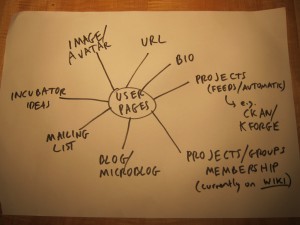
6 tips for a smooth website handover
Whether due to a client-agency relationship breakdown, insolvency or a random act of God, sooner or later you will be approached to take over the management of a website developed by another web agency.
So, how can you best handle this situation? Well, before you accept the contract and begin work on the site consider these 6 points…
1. Why do they need a new supplier?
Find out all you can but remember that every story has two sides. If you’re told by the client that it was because the previous incumbent consistently delivered poor work late, consider that maybe the client has asked for unrealistic deadlines.
If possible, speak to someone at the old agency to get their version. It’s unlikely that senior staff will be willing to speak to you about it but you may be able to get a view from junior staff or ex-staff. Use a LinkedIn advanced search to identify them.
It’s important to explore the reasons in detail because you may uncover something that will fundamentally affect your relationship with the client. If the client sacked the old agency because they couldn’t appoint a dedicated project manager to work on the account and neither can you, there is probably no point even considering the work.
2. Technology
It’s pretty obvious, I know, but find out what technology the current site uses. This might not be as easy as it sounds; SEO friendly URLs won’t show file extensions and although viewing the page source might, for example, reveal ASP.NET viewstate code it is just as likely to show only the page’s HTML and JavaScript.
Often clients won’t know (or care) what technology their site is built in but they may have FTP access to the server or a copy of the site files. Failing that you will have to contact the previous supplier either directly or via the client. Don’t expect them to be particularly helpful and do expect them to drag their feet, so try to keep all communication to email so you have a paper-trail that proves you have made contact.
If your development team is not familiar with the technology consider carefully how you want to proceed. Taking the contract will mean you either 1) employ one or more specialist developers or 2) hire freelance resource (if the original site developers have gone into administration their team may be around for hire). Ask yourself whether the fee, kudos or other benefit earned from the work is worth this extra expense.
3. CMS
If the site has a CMS you should be able to get access from the client. As with technology above make sure you have (or are prepared to get) the development resources needed to maintain the CMS.
If the CMS is open source you will be able to download it freely but ensure you have the same version that the existing site uses. You may also have to configure your test and production servers to enable the CMS to run, which in turn might mean that you have to purchase a different hosting package if the new settings will affect sites that share your current web server.
Where the CMS is a licensed product the client will usually own it, but some web agencies purchase the product for the client and only transfer ownership if the client changes supplier. Again you may have to review the hosting situation.
A third possibility is that the CMS has been developed by the previous supplier and is owned solely by them. In this case they can simply refuse to transfer the license, meaning that the site will have to be developed again from scratch. I have known cases, though, where an agency will output an HTML dump of a site which, although only generating a static site, could form the basis of its redevelopment.
4. Liaising with the previous suppliers
As I mentioned above, it’s unlikely that the previous web agency will be over-helpful when dealing with you. Even if they have a contract with the client that demands that site files are handed over in the event of re-tendering, you will find that they will often do the minimum required of them in the longest time possible.
This is, of course, frustrating but put yourself in their shoes and be as patient as you can. Always be friendly and polite in all communications, confine them to email, letter or fax and keep copies. In the worse case the client may be forced to take legal action against them and will need evidence of their refusal to comply with the terms of their contract.
5. DNS changes
Usually you will want to move the website files onto a web server that you manage. This requires that you amend the website’s DNS records, the mechanism that points the domain name to the web server where the website files are stored.
This is normally handled through an online control panel, access to which will be provided by yoru ISP. Here you set the IP address(es) to which your domain points.
6. Domain ownership
Development companies will often purchase domain names for their clients and register their own details in the domain registry. In such cases the domain should be transferred to the client. This is a legal process that is undertaken by the organisation that owns the domain registry (for example, in the UK Nominet manages the .co.uk domain registry). There will be a fee for this service which can be either paid by the previous web agency or by the client.
It can get tricky when you want to change the domain registrar. The registrar is the ISP who you (the registrant) purchase the domain name from. If you want to change the registrar, contact your current registrar who should be able to move the domain name to the new ISP. In some cases they can’t or won’t transfer the domain. In this case you can approach the owner of the domain registry direct who will make the change for you for a small fee.
Be aware, though, that the change may not be automatic and could require that the registry owner contacts the current registrar to seek permission to make the change. In this case the process can take several days.
And finally…
One last point. If you do find yourself sacked by a client for whatever reason, try to play the bigger person and assist the new web developers where you can (don’t go out of your way to help them but give them what they need). And consider supplying a handover check list to the client which lists the information that is required to manage/administer the site.
This approach will reflect well on you in the client’s eyes and you never know how long the new supplier will last.




